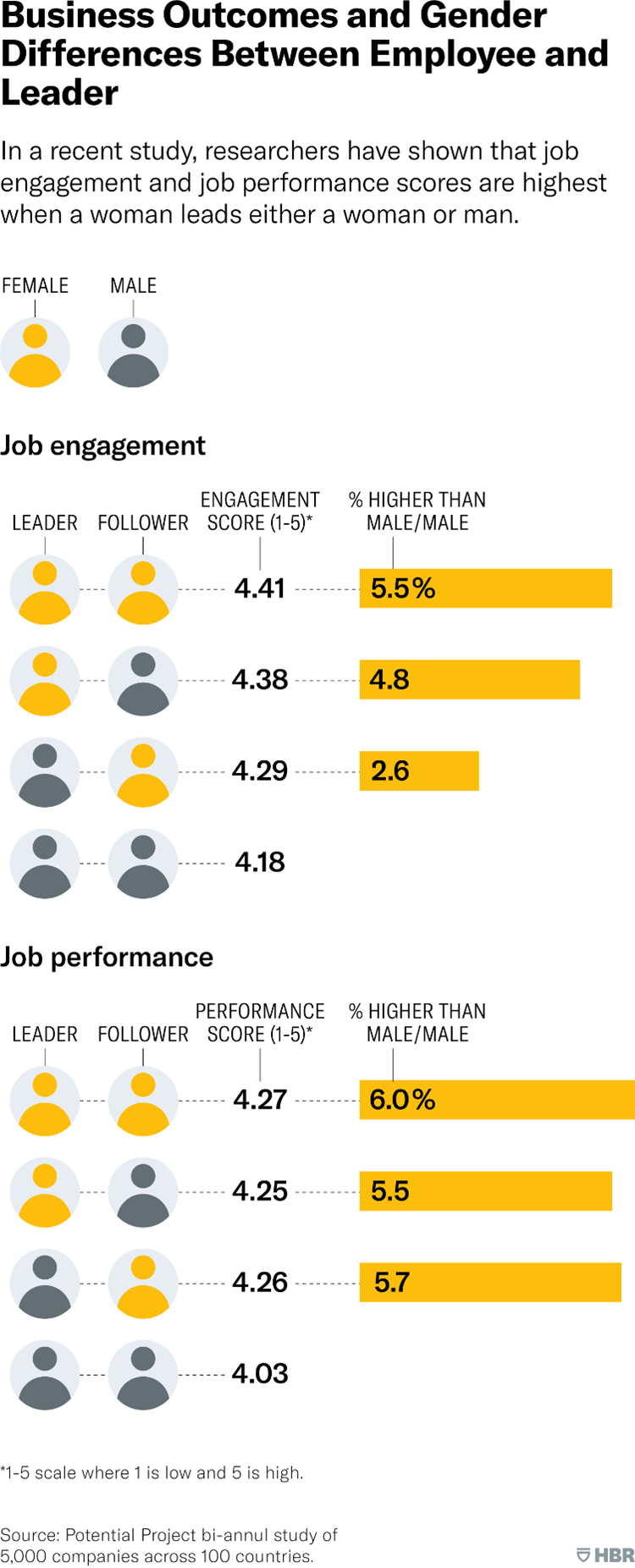Blog: More women in leadership is key to workforce
More women in leadership is key to workforce success

The COVID-19 pandemic has cast a long shadow on women in the workforce, with 54 million women leaving their jobs within the first year of the outbreak. This mass exodus, accounting for nearly 90% of departures, has driven down the participation rate of women across the global labor force to a stark 47%, lagging far behind men at 72%. The consequences of these losses stretch beyond gender parity, careers, and female leadership to the entire workforce.
Exodus of women left a leadership vacuum
The repercussions aren't confined to women alone; they also encompass a broader impact on engagement and productivity across all employees who are deprived of the chance to collaborate with female leaders who excel at driving engagement, job performance, and cost savings. Amid rising resignations and talent shortages, prioritizing women's leadership retention and promotion becomes crucial to securing collective advancement.
A comprehensive study by the Potential Project delved into the attributes of effective leadership across genders. Wisdom – marked by the courage to tackle challenges – and compassion – encompassing empathy and support for others – emerged as vital traits. When combined, these attributes yield remarkable results, boosting job satisfaction by 86% under the guidance of wise and compassionate leaders.
Strikingly, the research indicates that 55% of women exhibited these qualities, compared to only 27% of men. The study also found that women leaders excel in steering their teams through difficulties with a human touch, setting them apart in their ability to manage crises.
Throughout the pandemic, women leaders displayed exceptional resilience and adeptness at people-centered actions. This aptitude enabled them to provide emotional support, attend to overall well-being, and address burnout effectively.
The hard facts of soft skills
The narrative that women rise to the occasion in crisis and take a backseat in peace times has been handily debunked as women have demonstrated steadfast strength of leadership over the past extraordinary years. Even as numbers have fallen, the impact has remained notable.
Several studies confirm that workers across the board perform better and enjoy their jobs more when they work for women, with the biggest benefit, in fact, being for men. This is important because workers overwhelmingly say they aren’t leaving the organization, they are leaving a bad boss.
The financial implications of this are staggering. According to Gallup research, a disengaged employee costs an organization $3,400 for every $10,000 of salary in lost productivity. Between this and avoiding the cost of replacing employees who leave, women leaders who foster employee engagement save organizations millions per year.

What it takes to usher in the Great Retention
Men currently occupy 76% of C-suite positions in the US and Canada, according to Catalyst, so it follows that there is lost potential for efficiency, productivity, and job satisfaction throughout North American organizations. To improve this landscape in the future, we need to lookdown the pipeline to resolve the barriers keeping women from early career advancement and provide flexible arrangements that genuinely support them.
There are a few things to keep in mind when considering how you attract and retain women with leadership potential:
Women resignation rates are 17% higher than men.
It is easier to keep a top performer than to find a new one – competition is fierce.
Diversity across the board is essential – look beyond gender to ensure that your high-performer pipeline includes women of color, those who are neurodiverse, and women across the age spectrum.
Developing a Retention Action Plan is a strong first step to attracting and keeping diverse top performers at every rung of the ladder and ensuring they make it to the positions where they can make the most impact. Here are a few elements to include in your retention plan:
- Hold stay-interviews to ensure you understand the Workplace Health of your current women managers as well as those on your promotion list. Retention tactics are too late once they have resigned.
- Ensure every employee has a career development plan – Not just your few high-potential employees but every employee.
- Pay attention to diverse employees – inclusion and representation matters. If you do not have a sense of belonging, your diverse employees will leave. Are you complacent or observant?
- Adopt generational awareness – You are fostering five generations of management. Listen and learn their unique needs and employment wishes. Employees are voting with their feet. Ensure they don’t want to leave your teams.
In addition, cultivating peer learning initiatives can encourage diverse leaders to share experiences and insights, fostering inclusive cultures. It is evident that the world of work and beyond demands wisdom and compassion. Women leaders stand out as a potent source of these essential qualities. To truly capitalize on their potential, it is imperative to nurture and support both existing and future women leaders.
We are the backbone of a thriving, resilient workforce, and our contributions are indispensable!Join us for the WOMANagement Conference in October 2023!
Elevate your career and management skills at our 2nd Annual WOMANagement Conference on Thursday, October 19, from 11:00-2:00 pm ET. Whether you're aiming for leadership roles or looking to enhance your managerial effectiveness, this event is designed for you.
Join us along with guests and members across the globe for inspiration, education, and valuable mentorship opportunities. Discover best practices and strategies for climbing the managerial ladder, and the importance of mentorship in achieving gender balance within organizations. Let’s shape the future of management and pave the way for more women in leadership at every level.
Register now for The WIT Network WOMANagement Conference 2023

